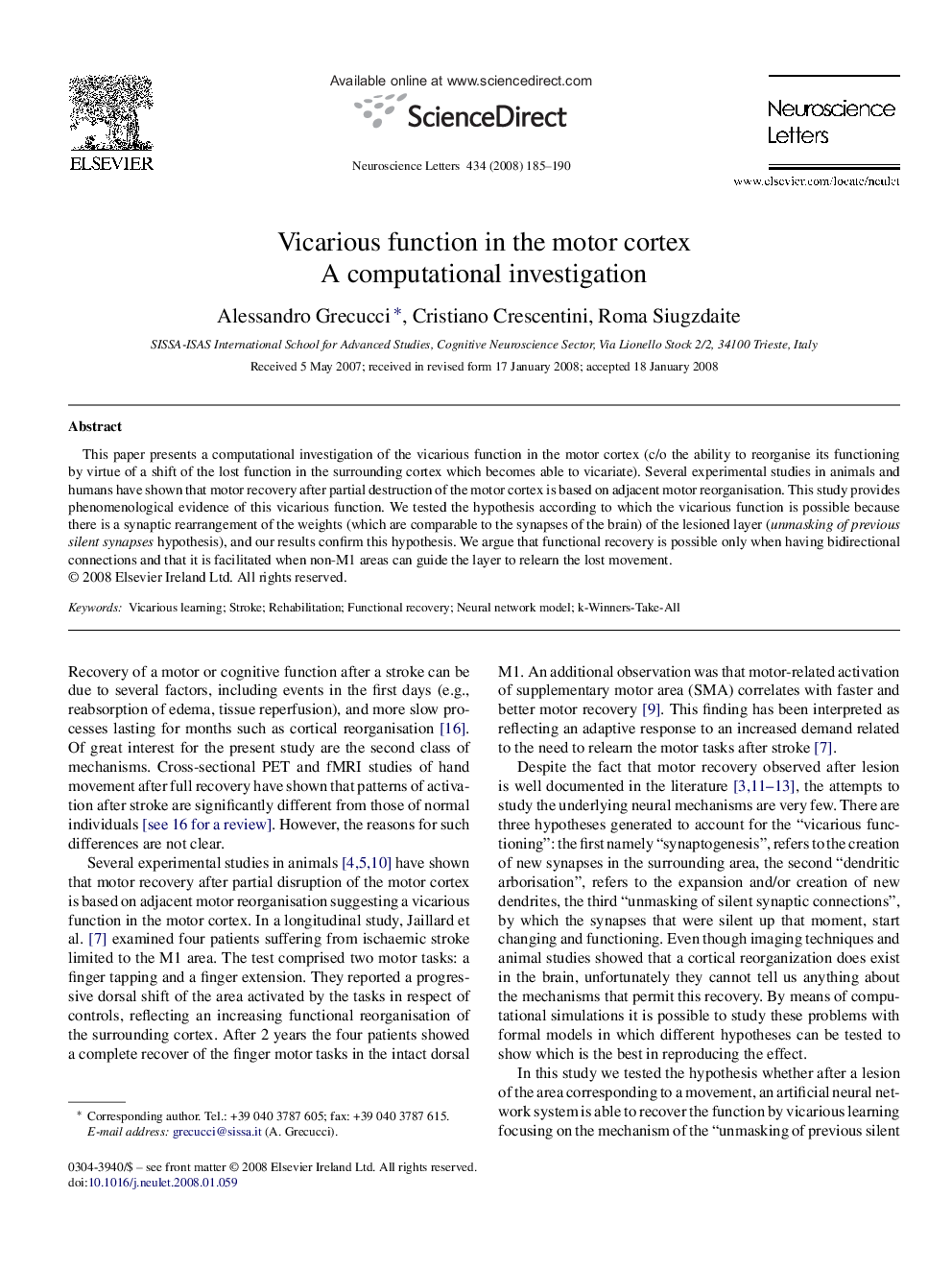| Article ID | Journal | Published Year | Pages | File Type |
|---|---|---|---|---|
| 4348685 | Neuroscience Letters | 2008 | 6 Pages |
This paper presents a computational investigation of the vicarious function in the motor cortex (c/o the ability to reorganise its functioning by virtue of a shift of the lost function in the surrounding cortex which becomes able to vicariate). Several experimental studies in animals and humans have shown that motor recovery after partial destruction of the motor cortex is based on adjacent motor reorganisation. This study provides phenomenological evidence of this vicarious function. We tested the hypothesis according to which the vicarious function is possible because there is a synaptic rearrangement of the weights (which are comparable to the synapses of the brain) of the lesioned layer (unmasking of previous silent synapses hypothesis), and our results confirm this hypothesis. We argue that functional recovery is possible only when having bidirectional connections and that it is facilitated when non-M1 areas can guide the layer to relearn the lost movement.
